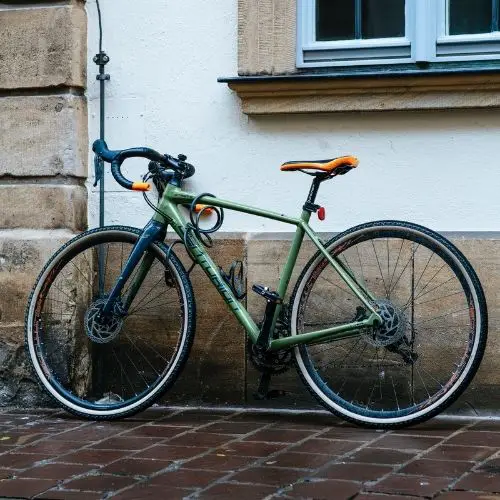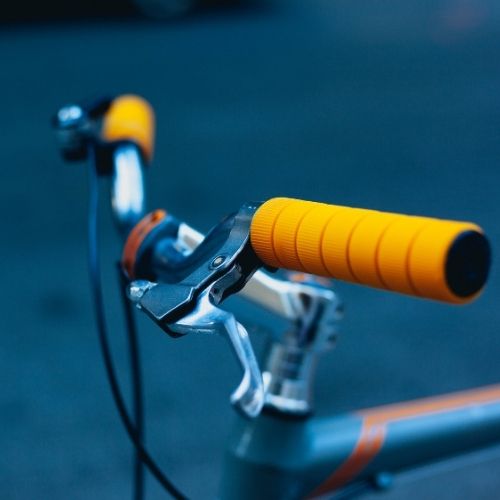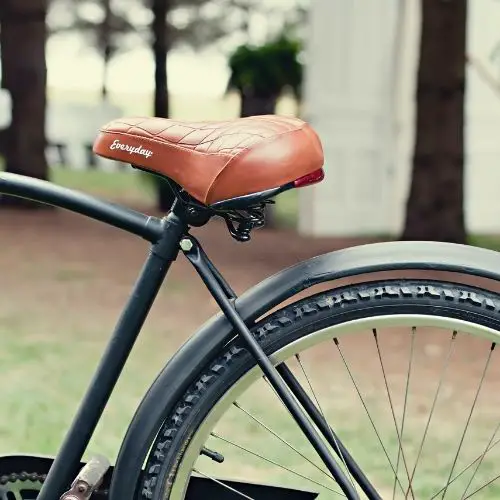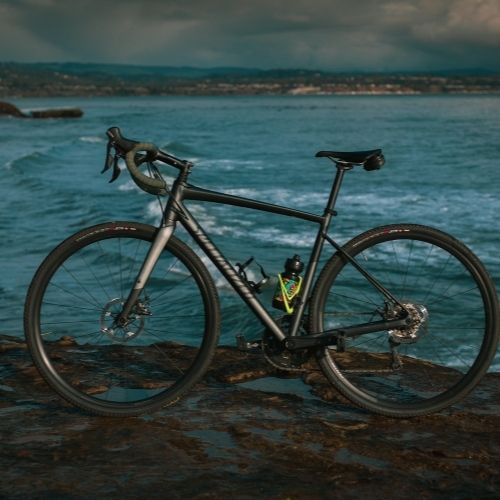
Bicycle brakes can be prone to a variety of problems, such as squeaking, a spongy feeling or even having them stick in place.
The problems you are facing and their solutions will often depend on the type of brakes you have on your bike. For example, do you have mechanical or hydraulic brakes?
In this post we will go through the possible symptoms and what you need to do to fix them. However before that, lets get you a straight answer.
So why are your brakes not working? Your bike brakes can not be working for a veriety of reasons, however the most common reasons come down to not having your brakes regularly maintained. Items like cables, pads, and more need to be maintained, and checked regularly to make sure they are working in tip top shape.
Different Types Of Bicycle Brakes
The first thing to do is to establish what kind of brakes your bike is equipped with. This is so we can get to the bottom of your problems sooner.
1. V-brakes
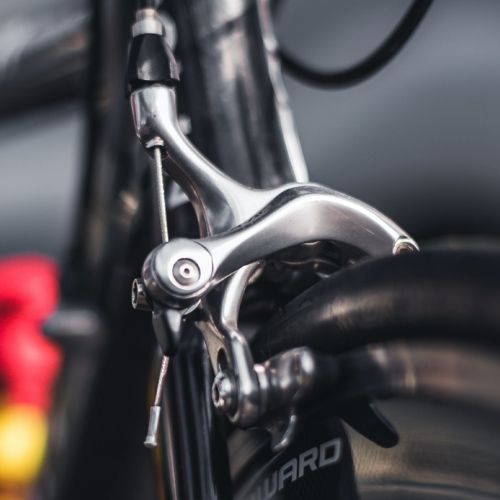
V-brakes are also known as rim brakes.
They work by pressing brake pads on to the rim of your bike wheels. They are mechanically operated via a cable attached to your brake lever.
These are often found on older bikes, road bikes, or city bikes that are not ridden aggressively.
2. Mechanical disc brakes
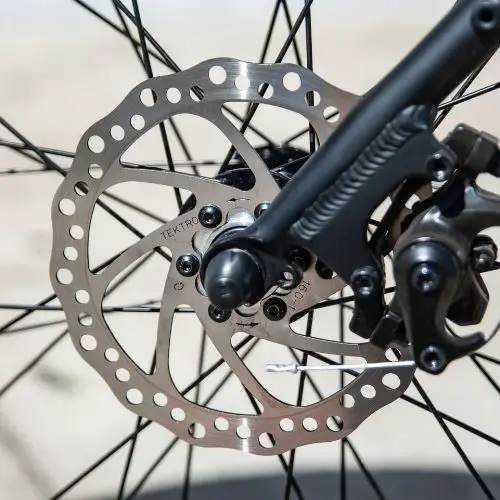
Mechanical disc brakes work via a cable, just like V-brakes. But instead of pressing pads on to the wheel, they press them on to a disc brake mounted in the center of the wheel.
You will see mechanical disc brakes on lower-end mountain bikes and higher-end city bikes. They give more stopping power than v-brakes and are easy to maintain.
3. Hydraulic disc brakes

Hydraulic disc brakes use a disc in the center of the wheel, but instead of being activated by a cable, they use hydraulic fluid. This is very similar to how a car’s brakes work.
Hydraulic brakes are very powerful, and they give the rider lots of control, as they are easy to modulate. You will find hydraulic disc brakes on higher-end bikes of all types.
My Brakes Are Squeaking
If your brakes are making a squeaking or squealing noise when you apply them, you need to look at a couple of things.
The first thing you need to do is to check your brake pads. If you have disc brakes and they have worn down too much, the pistons in the brake calipers will be pressing against the disc when you try to slow down.
If you don’t replace your pads, you can damage your brake calipers and the disc. This shop here is an awesome place to be able to buy good brake pads.
It is much easier to see how much brake pad material you have left with V-brakes, but you need to take the pads out when you have disc brakes to see.
If your brake pads still have enough meat on them, they may be contaminated. This could be the case for both v-brakes and disc brakes.
To ensure that they are clean, you could clean the pads and rim/disc with some degreaser (like this one right here). If this fails, you can sand down the pads to remove the top layer and the contamination.
Sometimes disc brakes will squeak if there is some dust or grit on them. This is common for mountain bikers that ride in dry and dusty conditions. Often the dust will disappear, but it is worth verifying that this is the problem, just in case it is more serious.
My Brakes Feel Spongy
If you are riding a bike with V-brakes, you will experience sponginess if one side of the caliper isn’t working as effectively as the other. This could be due to a buckled wheel, which means the pads are not in contact with the rim properly.
You may also want to check if the caliper is aligned correctly, as a misaligned caliper also gives you a spongy feeling.
If you are experiencing spongy brakes with hydraulic brakes, the problem may lie with the brake fluid (if you have hydraulic brakes). If there are air bubbles in the brake fluid, it won’t create the required pressure.
Therefore, you will need to bleed the brakes (using some fluid like this) to get rid of these bubbles to make your brakes feel firm again.
My Brakes Are Sticking
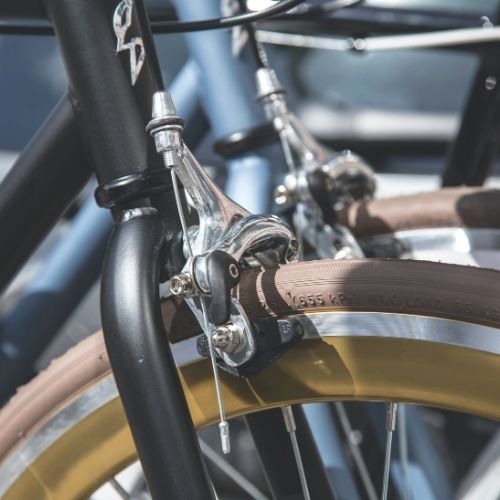
You may experience your brakes sticking. This will either be when you apply them, and nothing happens, or they don’t release when you want to stop braking.
The first thing you need to check is if the brake cable housing is all operable.
Check to see if it is damaged or rusty inside, as the cable needs to move freely within the housing. If the housing is damaged or rusty, you should relapse the cable and its housing.
The other thing you should check is to see if the cable is damaged or frayed. This will stop the cable operating as it should; therefore, you will need to replace it. Thankfully it is relatively easy, and inexpensive to do if you buy it right here.
When you replace the cable, it is worth dropping some lubrication into the cable housing. This will help the cable slide, and it will help to protect it from the elements.
- Which is better: Bicycle Disc Brakes vs Rim Brakes
- 9 Common Problems with your Bicycle, and how to fix them
- 3 Differences Between Cheap and Expensive Mountain Bikes
My Brakes Are Not As Strong As They Were
If you are braking and nothing much seems to be happening, there are a couple of things that could be causing it.
The leading cause of this problem with v-brakes is that the cable may not be properly tensioned or stretched. This is not a complicated problem to solve, as they are very easy to adjust.
The other thing that could be causing weak brakes is that the cable could be slipping. Therefore, you should check the fixing bolts on the caliper to make sure they are tight enough.
You may experience this problem with hydraulic brakes too. This is another time when you should check your brake pads, as they might be glazed. You can glaze your brake pads if you don’t bed them incorrectly when you put new ones in.
To check if your bike’s brake pads are glazed, remove them and see if they are shiny. If they are, you can spend some time sanding them down to remove the shine. However, most of the time, it is worth replacing them.
Conclusion
If you follow these guidelines, you will be able to diagnose and fix your problem. By keeping an eye on your braking system, pads, and discs, you will be able to commute, have fun, and stay safe.

